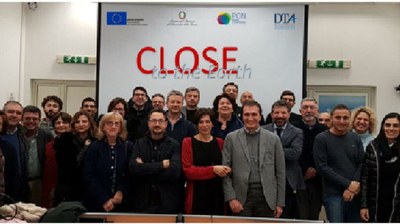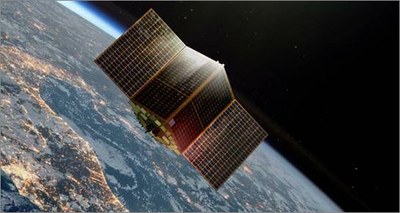Aerospace: Mini satellites for increasingly accurate information
4/7/2019
It’s the objective of the project "Close to the Earth",co-funded by the Ministry of Education, University and Research with over 9 million euro[2], which involves ENEA as part of the Brindisi Aerospace Technology District (DTA)[3].
“In low orbits the atmospheric friction imposes a greater use of propellers and this entails a higher consumption of propellant. But, thanks to atmosphere-breathing electric propulsion, which exploits the gases present in the atmosphere, it will be possible to make satellites orbit 250 km above the Earth, without the need for propellant on board, ”ENEA researcher project's scientific director Antonella Rizzo explained.
ENEA will be responsible for the construction of coatings, including multi-layer ones, through an innovative process of deposition by evaporation (Physical Vapor Deposition), capable of protecting plastic or metal components of vehicles from degradation when exposed to atomic oxygen. These innovative materials will be tested in a special laboratory simulating the pressure (up to 10-7 mbar) and temperature (from 180 ° C of the terrestrial side irradiated by the Sun to - 180 ° C of the one in shadow) of space orbits very close to the Earth.

- Group photo of the participants in the project start-up meeting held at the DTA headquarters in Brindisi.
“The long-standing experience in the field of functional and protective coatings of the laboratories of the ENEA Brindisi Center and the integration of scientific, academic and industrial knowledge and expertise, successfully employed in other research projects, will enable us to consolidate ENEA's role as member of the DTA in the Apulian aerospace sector ", Antonella Rizzo said. "We believe the new Earth observation tools at such low altitudes and with long operational lives will give a major boost to satellite services such as environmental monitoring, paving the way for new sectors of application," Rizzo concluded.
In addition to ENEA and companies in the sector such as GAP and IMT, the Universities of Bari and Salento, CNR, Sitael, Planetek, Enginsoft and Blackshape also participate in the project.
For more information please contact:
Antonella Rizzo, ENEA – Division Technologies and Processes of Materials for Sustainability, Brindisi Research Center, antonella.rizzo@enea.it
[1] Within 250 km above the Earth’s surface.
[2] PON Ricerca e Innovazione PNR 2015-2020
[3] Aerospace Technology District Scarl is a limited liability consortium company with the aim of supporting, through scientific and technological excellence, the attractiveness of investments in high-tech production sectors and contributing to strengthening the technical and scientific skills of its members, as well the Apulian research system at national and international level. ENEA holds 10.5% of the share capital.

